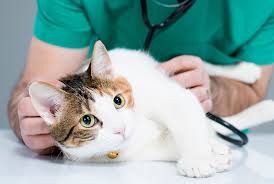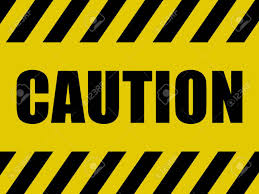Pet ownership, what we consider parenting, is an essential part of life. By far, parenting a pet is a rewarding experience that will give you years of enjoyment and human growth. Every child should be allowed to raise a pet, to teach them responsibility, accountability, and humanity. However, owning a pet is not something to be taken lightly. Taking a life into your home, regardless of the species, brings with it significant responsibilities. Garden of the Cats endeavors to teach these lessons to the public, especially the younger generation, at our public events. In the meantime, you can use this page to self-educate yourself with the basic of pet parenting.
Essential Needs of Every Pet
 Food: This is the most obvious need of every living creature. However, not just any food is suitable for each animal. Read up on the dietary needs of your pet so you can give it what its body requires. What a dog needs may not be the same as what a cat needs. Understand the range of food groups that your pet requires and ensure that it has them. Choose a food brand that is nutritious and will promote your pet’s continued health.
Food: This is the most obvious need of every living creature. However, not just any food is suitable for each animal. Read up on the dietary needs of your pet so you can give it what its body requires. What a dog needs may not be the same as what a cat needs. Understand the range of food groups that your pet requires and ensure that it has them. Choose a food brand that is nutritious and will promote your pet’s continued health.
Be familiar with the amount of food that is appropriate to feed your pet. Too much food and you will increase your pet’s weight to an unhealthy level. To little and your pet will not thrive as required. Most brands will have the appropriate amount of food necessary to feed your pet listed by weight written directly on the bag’s or can’s label. As someone who is responsible for apportioning your pet’s food, you are in control of your pet’s weight management.
In addition to daily feeding, be familiar with what foods may be poisonous to your pet, such as chocolate for dogs and cats. These foods can kill your pet, so be careful that your pet doesn’t have access to them. It is also possible that your pet might have a food allergy, so be vigilant as to the reactions your pet might have to certain foods that are normally okay for your pet. If your pet shows signs of a food allergy, you should consult a veterinarian to confirm the allergy and have a healthy diet prescribed for your pet.
Remember that your pet is just like you in terms of craving variety. You wouldn’t want to eat the same thing day in and day out. Your pet might grow bored with eating the same flavor of food every day. If your pet’s food brand offers a variety of flavors, try those flavors out to avoid boredom at the food dish. A word of advice: Don’t buy too much of any one flavor until you are certain that your pet likes it. You might be left with a bunch of food that your pet turns his nose up at.
Watching and recognizing your pet’s eating habits will help you identify when your pet is sick. A lack of interest in food is a good indication that something is wrong; in which case, you should check with your veterinarian on a possible illness that needs to be addressed.
 Water: Water is the most basic necessity of life. Without it, you and I would not live more than a few days. The same is true for your pet. Unlike food, your pet must have water accessible to him at all times. You cannot apportion water to your pet like you can his food. A lack of water can lead to dehydration, which can cause your pet’s health to deteriorate very quickly. Death can follow if a lack of water continues.
Water: Water is the most basic necessity of life. Without it, you and I would not live more than a few days. The same is true for your pet. Unlike food, your pet must have water accessible to him at all times. You cannot apportion water to your pet like you can his food. A lack of water can lead to dehydration, which can cause your pet’s health to deteriorate very quickly. Death can follow if a lack of water continues.
Providing water is not the only thing you must do; it needs to be clean water. When a pet drinks from his water bowl, he leaves behind bacteria and dirt that can grow more bacterium in the bowl. This develops a slimy film around the bowl and within the water. Failing to change your pet’s water regularly can cause your pet to become sick. When you change your pet’s water, don’t forget to clean the bowl.
Watching the way your pet drinks water is also a good way of telling if he is sick. If you are observant and notice how much your pet drinks when he is healthy, you can tell when he might be ill by an increase or decrease in his drinking. Since an animal cannot tell you if he is ill, you must rely on certain signs and behaviors to recognize illness.
 Shelter: Regardless of what kind of pet you have, it is sure to need some kind of shelter. Shelter provides protection from the elements, such as rain, snow, heat, and cold. The shelter can be your home or it can be a dog house or catio outside, provided that it gives your pet relief from the extremes of weather.
Shelter: Regardless of what kind of pet you have, it is sure to need some kind of shelter. Shelter provides protection from the elements, such as rain, snow, heat, and cold. The shelter can be your home or it can be a dog house or catio outside, provided that it gives your pet relief from the extremes of weather.
All kinds of pets are susceptible to overheating and ypothermia (freezing) in extreme temperatures. Even if your long-haired pet has a thick coat, extremely cold temperatures can kill your pet if they are left out too long in the elements. The feet of dogs and cats can freeze in snow and suffer frostbite.
Heat is a killer for pets if they aren’t provided relief from the sun. A pet that is left outside in the heat should not only have a shady spot to take refuge in, but ventilation. Most pets with fur do not sweat; they pant to cool themselves down. However, cooling themselves down by panting may not be able to keep up with extreme heat. Any pet that is left outside, regardless of being in direct sunlight or shade, must be provided cool water to keep hydrated. Be vigilant in where you put your pet’s water bowl if your pet is outside. If the sun heats up the water, your pet may not be able to drink it.
Rain, snow, sleet, and hail can be injurious to animals. The battering of these climates can cause injury and illness to your beloved pet. If you keep your pet outside, remember them when the weather turns inclement. Bring them inside until the storm blows over. Even if you have a shelter outside for your pet, such a simple shelter may not provide adequate protection in a damaging storm.
A simple rule of thumb for determining whether the weather is too extreme for your pet is if you would like to be left outside in it yourself. If you believe you would suffer in the direct heat or cold, or even be uncomfortable in it, then your pet would be as well.
This must be said while talking about keeping a pet outside. NEVER CHAIN A PET UP. This is an act of cruelty and severely dangerous to the animal.
 Medical: When you take on parenting of a pet, you are agreeing inherently to ensuring that it receives proper medical attention. The least you can do is provide the necessary vaccinations for your pet species. Vaccinations (such as rabies) may be required by the law, but others are for the animal’s benefit. Vaccinating your pet will prevent costly and emotionally draining expenses in the future.
Medical: When you take on parenting of a pet, you are agreeing inherently to ensuring that it receives proper medical attention. The least you can do is provide the necessary vaccinations for your pet species. Vaccinations (such as rabies) may be required by the law, but others are for the animal’s benefit. Vaccinating your pet will prevent costly and emotionally draining expenses in the future.
Medical costs for pets can be expensive, depending on the issue, but preventive care will pay off in the end. Be vigilant of your pet’s eating and drinking habits, and know his normal behavior. Changes in any of these can be an indication of an illness. If you address illnesses before they escalate, you can save yourself some costly bills.
Some pet parents might find themselves faced with a heart-wrenching decision of what to do with their pet if the bills are too much for them to pay. If this is the case for you, you might find yourself deciding on whether you can afford to care for your pet, find another home for it, or have it put down. This is a possibility you should consider ahead of time, before it becomes a reality, and come up with a plan if you are faced with this horrible situation. Check with your veterinarian to see if they offer payment plans or consider a pet medical insurance. Shop the options that are offered and choose what’s best for your situation.
One thing that is often overlooked in pet care is dental health. A pet doesn’t brush its teeth like you and I do. However, if it is possible to brush your pet’s teeth (like I do with my dogs), try it. I’m often complimented on my dogs’ teeth, even though I get them periodic dental care at the vet’s office. But if you cannot, or chose not to, brush your pet’s teeth, when you take your pet in for its annual checkup and vaccinations, have the vet take a look at its teeth. If the vet recommends any dental care, seriously consider getting it done. A pet with a sore mouth is likely to stop eating, which can lead to more serious health issues. And remember, dental disease does not fix itself.
 Exercise: Your pet will live a long and healthy life if it is given a good regimen of exercise. Exercising your pet helps bond you with your pet by giving it an activity the two of you can share together. Pets enjoy activities to get their blood pumping, since they otherwise will be lounging around all day. Just like human beings, if left without engaging in rigorous activity, a pet will grow listless, gain weight, and lack interest in life.
Exercise: Your pet will live a long and healthy life if it is given a good regimen of exercise. Exercising your pet helps bond you with your pet by giving it an activity the two of you can share together. Pets enjoy activities to get their blood pumping, since they otherwise will be lounging around all day. Just like human beings, if left without engaging in rigorous activity, a pet will grow listless, gain weight, and lack interest in life.
Overall, exercise is essential in keeping a pet both mentally and physically healthy. This exercise must be interactive, such as throwing sticks to your dog or teasing your cat with a feathered wand. Simply letting your dog out in a fenced yard will not guarantee that he gets any exercise. You must encourage your pet to take part in physical activity.
Pets like dogs and cats are ruled by instincts long-ingrained in them from their ancestral forefathers. Those forefathers were hunters that stalked and chased prey. Your domesticated pets still have those instincts, so play with them to satisfy those urges. For a dog, that stick may be enough to chase after; for a cat, those feathers mimicking a bird will do well to give her a thrill.
Good exercise is any activity that your pet enjoys and engages in until he tires himself out. A good rule of thumb as to when enough is enough is when your pet drops into his resting posture (lying down) and pants happily. You will notice this by that satisfied look on his face when he is done playing.
Exercise is also a good method of helping an excitable pet be calm throughout the night, especially if it is a younger pet. If you want your pet to sleep through the night so you can, engage it in rigorous exercise (playtime) before you retire to bed. Once your pet has exhausted himself, give him a plate of food or treat. This was the natural progression of activity for the domesticated pet’s wild ancestors: They chased their prey (exercise) and ate it (nighttime snack). With a full belly after some rigorous activity, your pet will sleep well through the night.
 Dangers and Safey: There are so many dangers involved in pet parenting that a whole website can be dedicated to them, but common sense can help you negotiate what those dangers are. Dangers can be anything from other aggressive animals, vehicles, poisonous plants and food, and environmental traps. Depending on what kind of pet you have, what might be safe for one species might be dangerous to another. Learn about your pet species and the hazards that challenge it. Pet-proof your home to limit your pet’s exposure to accidents. Fence in your yard to contain your dog. Keep cats inside. Be the parent! Don’t be swayed by your pet “begging” for freedom if it means sacrificing safety for it. You can end up with a huge vet bill if your pet gets hurt. You can also be liable for other bills if your pet hurts someone or another animal. It’s not worth letting your pet roam free in the neighborhood just because you don’t want to say no. That’s not even taking into account the problem with increasing the pet population because someone’s un-altered pet had a midnight rendezvous with the neighbor’s pet or feral population.
Dangers and Safey: There are so many dangers involved in pet parenting that a whole website can be dedicated to them, but common sense can help you negotiate what those dangers are. Dangers can be anything from other aggressive animals, vehicles, poisonous plants and food, and environmental traps. Depending on what kind of pet you have, what might be safe for one species might be dangerous to another. Learn about your pet species and the hazards that challenge it. Pet-proof your home to limit your pet’s exposure to accidents. Fence in your yard to contain your dog. Keep cats inside. Be the parent! Don’t be swayed by your pet “begging” for freedom if it means sacrificing safety for it. You can end up with a huge vet bill if your pet gets hurt. You can also be liable for other bills if your pet hurts someone or another animal. It’s not worth letting your pet roam free in the neighborhood just because you don’t want to say no. That’s not even taking into account the problem with increasing the pet population because someone’s un-altered pet had a midnight rendezvous with the neighbor’s pet or feral population.
When you decide on taking a pet into your home, read up on specific concerns that come with these pets. The Internet has articles on what dangers exists for each species of pet. For cats, it can be the household dog or high places that it can climb but can’t get down from. For dogs, it could be poisonous plants outside or electrical cords. Be familiar with what threats might exist in your home and pet-proof it before you get your pet home.
Remember that there are entirely different dangers in your home for young pets (puppies and kittens) that may not be threats once your pet matures into an adult. For example, electrical cords that teething puppies and kittens could chew on. Be aware of what these dangers are to circumvent accidents from happening.
 Love: Nothing is more essential and esoteric in pet parenting than love. This is ultimately the reason why we bring them into our home: We want to share love with them. Without a doubt, they will return that love to you. There is nothing more rewarding than having a pet love you unconditionally. What other animal will do that with a human being.
Love: Nothing is more essential and esoteric in pet parenting than love. This is ultimately the reason why we bring them into our home: We want to share love with them. Without a doubt, they will return that love to you. There is nothing more rewarding than having a pet love you unconditionally. What other animal will do that with a human being.
Love is what keeps our pets healthy and mentally stable. We can feed, water, and shelter them, but without love, they wouldn’t be happy. The simple act of petting an animal, cuddling it, or talking soothingly to it connects us to another species. It makes us human–connecting with an animal. Pet parenting is called that because it involves love, not just ownership. We parent, not own, our pets. We love them. To us, we consider them part of our family. If they pass, we grieve like our heart has broken into tiny, unrecoverable pieces. When we accept a pet into our home, it is not as a possession; it is a life that we are responsible for–just like a child.
The above features are just the basic requirements of pet parenting. If you master these, you can figure out the rest. Taking care of a pet is not brain surgery, but it is a responsibility. You are responsible for a life. Congratulations on trusting yourself to succeed.
Catherine Rudy
If you have any questions about pet parenting, regardless of the species, feel free to contact us for help.
Catherine Rudy, wolfpirateprop@aol.com

 Food:
Food:  Water:
Water: Shelter:
Shelter:  Medical:
Medical:
 Dangers and Safey
Dangers and Safey Love: Nothing is more essential and esoteric in pet parenting than love. This is ultimately the reason why we bring them into our home: We want to share love with them. Without a doubt, they will return that love to you. There is nothing more rewarding than having a pet love you unconditionally. What other animal will do that with a human being.
Love: Nothing is more essential and esoteric in pet parenting than love. This is ultimately the reason why we bring them into our home: We want to share love with them. Without a doubt, they will return that love to you. There is nothing more rewarding than having a pet love you unconditionally. What other animal will do that with a human being.